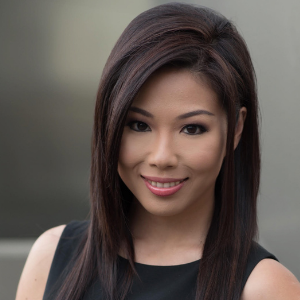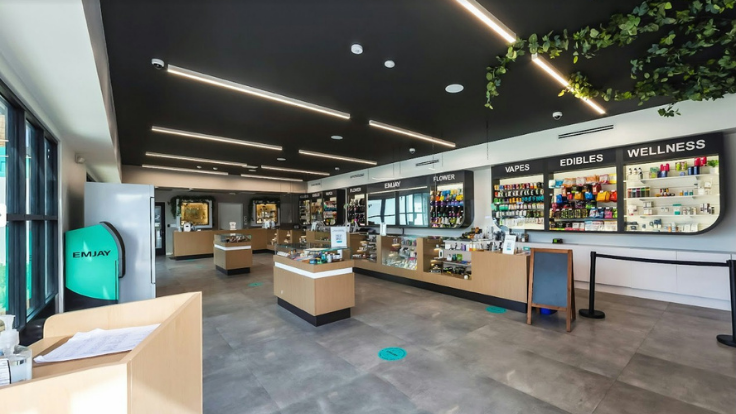A Cultural Design Approach: Q&A With Caisson Studios’ Alice Kuo
Marijuana Industry News May 19, 2022 MJ Shareholders
Alice Kuo has always had a passion for design.

© Courtesy of Caisson
After earning her undergraduate degree in accounting from the University of California, Riverside, she pursued a Master of Interior Architecture degree at the University of California, Los Angeles (UCLA).
Upon graduating from UCLA, she worked for an architectural firm for a few years and received hands-on experience and training—leading her to eventually open her practice, Caisson Studios.
Based in Los Angeles, Calif., Caisson Studios is an interior design company that specializes in residential, commercial and hospitality projects. In 2017, the company acquired its first cannabis-related design project.
“I had my first opportunity of working with a large cannabis group that was starting three [retail] stores,” says Alice Kuo, Caisson Studios founder. “That was the beginning of getting into the retail [side] of the cannabis industry.”
The Asian-American Pacific Islander (AAPI)- and woman-owned design firm has worked on roughly 25 cannabis-related design projects throughout California.
In this Q&A, Kuo discusses Caisson’s cannabis retail design projects in California and the company’s unique and cultural design approach in celebration of AAPI Heritage Month.
Andriana Ruscitto: Can you describe Caisson Studios’ unique and cultural approach to design?
Alice Kuo: I think cannabis retail design is very similar to other retail stores, but [there is] even more regulation we have to follow. Just like any design for a commercial space, the most important thing is we want to understand the client’s vision and who their target consumer is. Who are they selling it to? What’s their vision? Brand identity? Demographic? What product do they offer? How do they sell? What’s [their] sales strategy? [What’s] their consumer volume? So, all of [that] is crucial. At the very beginning, we call it programming to understand those [elements]. Then, we provide some of our expertise by studying the site location and understanding the building codes and the site condition.
Then we move on to the aesthetic. So, architecture [and] form, what does it look like? … We bring those elements in by choosing the right material, fixtures, graphics and textures for the store. Then we incorporate the appropriate lighting and layout. Circulation is another thing that we focus on because that is functionality. It’s not just fine art. At the end of the day, it has to look good, and they have to make money. I spend quite a lot of time on the layout and circulation to ensure that they can reduce wait time and see as many patients as possible. Of course, there’s always new technology coming into play, and it’s constantly changing, so we are also incorporating all of those elements into our design approach.

© Courtesy of Caisson
AR: What cannabis-related design products does Caisson Studios currently have in the works?
AK: We are working on three dispensaries with a group called Emjay. Emjay started as delivery-only, [but] we helped open its first flagship store in La Mesa, [Calif]. Since then, Emjay has another retail store under construction in Riverside, [Calif]. We are also under contract review [to build a store] in La Brea, Calif.
AR: What is the process like in working with clients?
AK: Some clients have a very clear understanding of exactly the aesthetic they want and what they’re looking for. Some clients are very open. They come in without any branding or any ideas. So, if they have a strong vision, we help them execute it using a technical aspect. And if they don’t, we help them work through the process of identifying a brand and then also understanding the neighborhood and looking at the existing site condition, and we take it from there.
AR: What are the biggest challenges of designing cannabis dispensaries in California’s cannabis market?
AK: I think [there are] a couple of challenges. Number one is the [industry] is ever-changing. … I know it has been a few years now, but there are always rules to keep up with. I think that’s really important. … For example, the rules keep changing about how you can display your retail products and the inventory in your retail space.
Products [in dispensaries] must be locked into a safe at the end of the day. So, for example, for a [dispensary with] lots of displays … how do we make sure that [they] can clear all the inventory at the end of the day … [but] also open up the store in a very efficient manner? Also, for example, how do you fulfill your orders to reduce wait time? … These things are constantly changing. [It’s important] to be adaptable and have trial and error. Look at different [dispensary] case studies and see what works.
AR: What are some of Caisson Studio’s most significant accomplishments that you’re most proud of from the past year?
AK: We have been able to work with many dispensary owners and work on so many different types of unique stores. That has been very exciting, and we feel really grateful to be able to work with so many different retail stores. For the last year, Emjay has been one of our very exciting projects that we are working on, especially when it comes to branding their retail stores as well.
AR: What are some of the company’s shorter- and longer-term goals?
AK: To bring more of our experience, work and expertise to more stores in California. The long-term goal will be to branch out to other states hopefully.
AR: What is some advice you would offer to new or even existing designers who are entering the cannabis design space, and how they can succeed?
AK: I think number one is to keep up with the law and regulation of the cannabis industry. The second would be to keep up with case studies on different dispensaries. …The aesthetic of the store affects revenue; it really does. I think that is something that a designer has to be very aware of because it’s not just executing a beautiful design. If you don’t understand the demographic and you design a store that is for the opposite of your targeted consumer when they come in, they feel uncomfortable in the space, and they’re not coming back. … As far as designers, sometimes we focus too much on aesthetics, especially personal aesthetics. At the end of the day, we need to realize that you design for the public and your client.
Editor’s Note: This interview has been edited for style, length and clarity.
MJ Shareholders
MJShareholders.com is the largest dedicated financial network and leading corporate communications firm serving the legal cannabis industry. Our network aims to connect public marijuana companies with these focused cannabis audiences across the US and Canada that are critical for growth: Short and long term cannabis investors Active funding sources Mainstream media Business leaders Cannabis consumers










